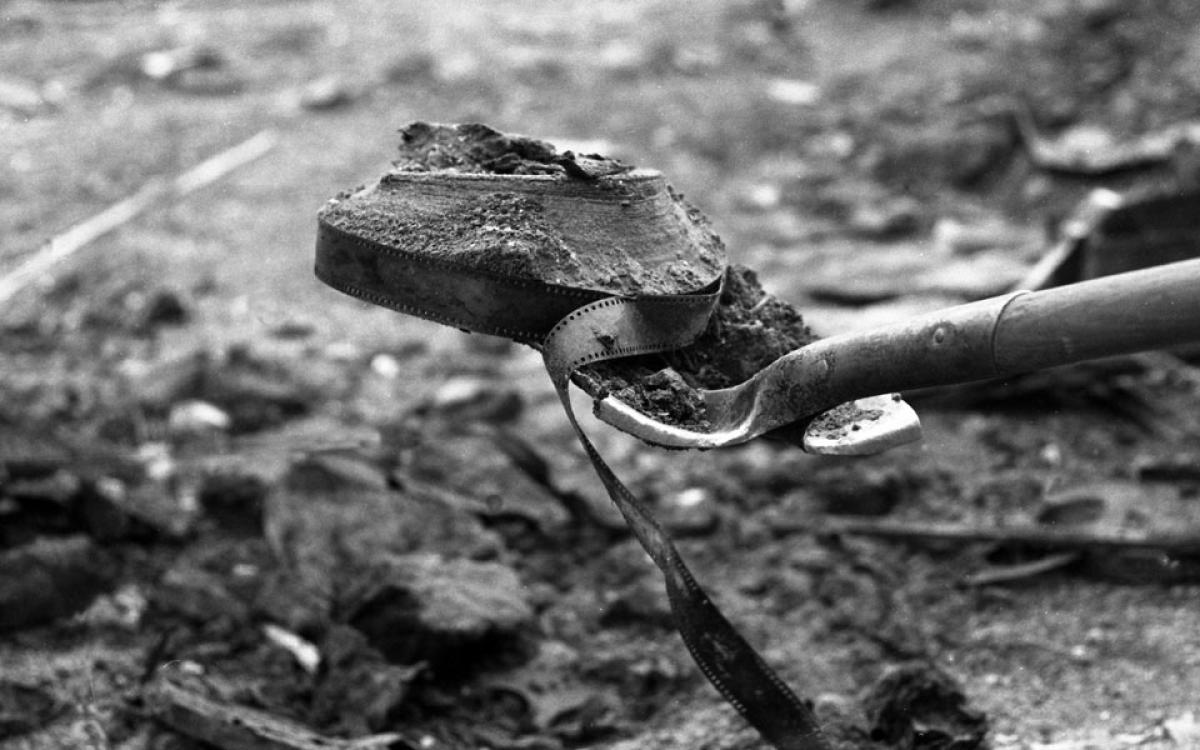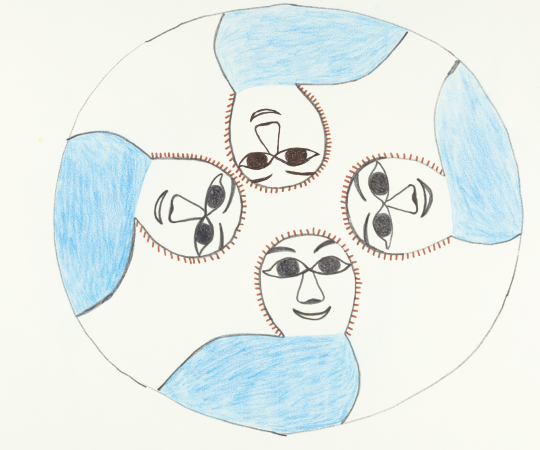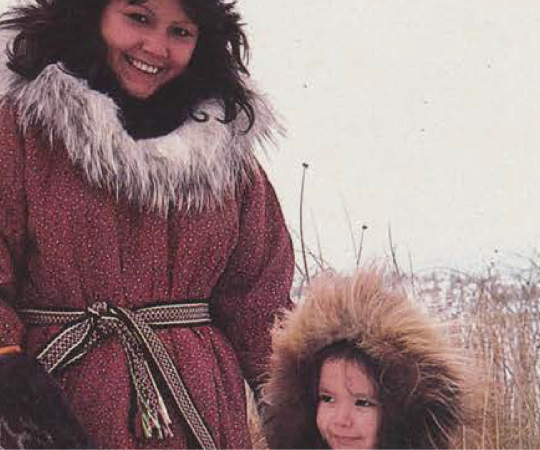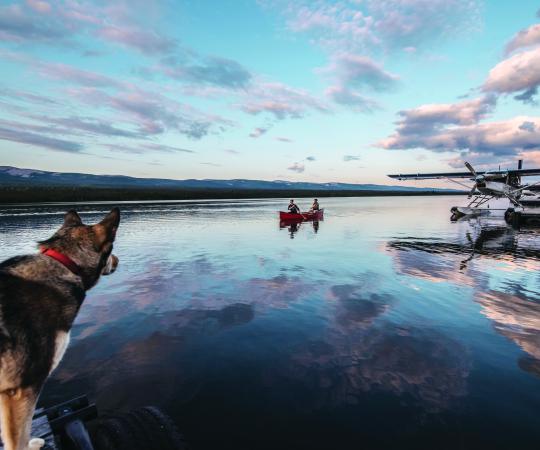During construction of a new Dawson City recreation centre in 1978, a backhoe unearthed 533 highly flammable newsreels and feature films: many had been thought lost, others were previously unknown. They dated from 1903 to 1929—the year they were stored in an abandoned pool and subsequently forgotten. The reels encompass the golden days of silent, black-and-white moving pictures.
Forty years after their discovery, New York filmmaker Bill Morrison turned this found-footage into a monumental, largely silent documentary, Dawson City: Frozen Time. It was released in 2017 to critical acclaim. The film is a meditation on the birth of cinema and Dawson’s ascent into the limelight. Adding to the discovered trove, Morrison cut in clips from other period films as well as stills from another find: almost 200 glass-plate negatives from the Klondike rush by the Swedish emigrant Eric A. Hegg. Considered valueless, they had been used as insulation in the walls of a Dawson City cabin until they were found in 1947.
UH: How did you come across the footage, given that it was discovered 40 years ago?
Morrison: I first heard the story as an art student in the late 1980s. It was already an old news story that still circulated among people interested in archival film: the films found buried in a subarctic swimming pool. I always thought I might one day try to tell this incredible story—already a kind of legend—using the actual materials that were found in the pool. I thought it could work as a kind of mythological creation story for the 20th century.
Unlike almost any other archaeological discovery, the Dawson City film find is blessed with a first-person account by the man who actually put the films in the swimming pool. Bank manager Clifford Thomson’s letter to the Klondike Korner of August 15, 1978, outlines what happened to the films once they reached Dawson and how they came to be buried in the swimming pool. In part, this became my script, which I expanded to include the origins of cinema, the gold rush and the rapid rise and long decline of Dawson throughout the 20th century.

Eric A. Hegg’s photos of miners lining up to climb the Chilkoot Pass and scenes from Charlie Chaplin’s The Gold Rush (1925) have become iconic. You reference both in your film. How did you go about incorporating both the “factual” and “fictional” imagery?
You could make a strong case that the only reason the Chilkoot Pass crossing has attained the iconic status that it has is because Hegg set up a studio in Skagway, Alaska and documented the stampeders making their way up the 45-degree slope throughout the winter and spring of 1898.

Chaplin was inspired to make The Gold Rush after seeing Hegg’s photographs, which reportedly were shown to him by Douglas Fairbanks and Mary Pickford on their stereoscopic viewer. The Hegg photographs had been in the popular ether for 20 years by that time. They had popularized the myth of the gold rush when they were first viewed, causing a riot in a New York gallery when they were first exhibited in 1901. Chaplin clearly constructs his shots after the Hegg photographs, and responds to them by sliding down the slope at a 45-degree angle. I also used clips of the MGM production The Trail of ‘98 (1928), which imagines the Easter Sunday avalanche of April 3, 1898, which only survives in Hegg’s photographs of its aftermath.
Your film examines the role of the fledgling film industry at this northern outpost of civilization. Why was Dawson a perfect petri dish?
The timing was right. Large-scale, commercial projection and Dawson City were born the same year: 1896. From the outset, Dawson City had an idle, captive audience looking for thrills. Theatres were built from the very beginning to entertain the townspeople, especially through the long, dark winters. The right type of impresario was already there. Future Hollywood theatre moguls Alexander Pantages and Sid Grauman were working the hotels in Dawson, and saw first-hand how cinema could command the same price as theatre tickets at a fraction of the expense.

Dawson City has been called a “two-hour-long meditation on the art form of films and on history.”
Silver (nitrate) follows gold to the far corners of the Earth, wherever it may be found. In Dawson, silver was literally buried in the same earth from which the gold was pulled—once the gold was gone, the silver died.
I think it is why the story has resonance beyond simply being a story about lost films found. It is a story of the 20th century and the forces that were at play in shaping the world we live in today, and that starkly played out in black-and-white in Dawson City. It is Western expansionism and the rise and fall of capitalism as seen through the movies.
We are literally telling the story of how these films came to be buried and re-discovered in Dawson City. But we are also using this peculiar tale as a synopsis of the American 20th century, which is why the inclusion of Donald Trump’s grandfather’s Klondike restaurant-hotel and brothel is not only timely, but incredibly compelling. It was on the dreams of the gold rush stampeders that the current U.S. corporate autocracy was built. Early cinema played a crucial role in attracting these stampeders, in mythologizing Dawson City to the world once they arrived and, after they left, in expanding the myth of Western culture and selling capitalism to remote corners of the world like Dawson City.
Cinema is capitalism, which brings with it, on a razor’s edge, both dreams and death. This is, in a nutshell, what the film is about.
Do you see a connection between Hollywood—the Dream Factory—and historical gold rushes on an individual level?
I think the same type of personality who leaves their home in the Midwest to climb over the Chilkoot Pass in search of gold is perhaps the same type who would go off to seek fame and fortune in Hollywood.










